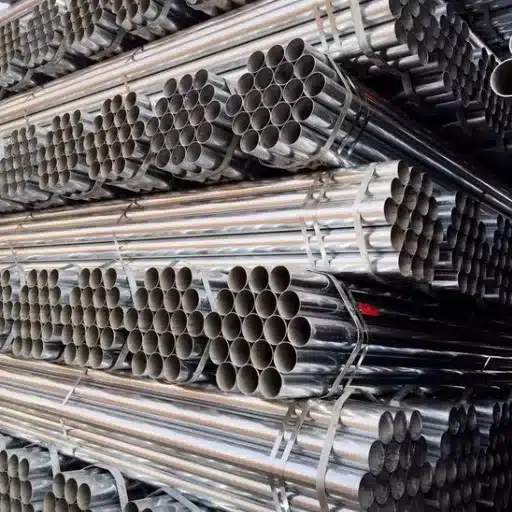Selecting an appropriate steel grade for your application scope is a critical decision that impacts the efficiency, longevity, and overall value of the end product. Due to its omnipresence compared to other materials, steel offers a broad selection of grades, each designed for a particular requirement of strength, flexibility, susceptibility to corrosion, etc. It is important to know the differences between these grades and their intended uses to achieve true value and performance while minimizing expenses. The objective of this article is to explain the main types of steel grades with their properties and real-life applications so that the user is better informed for their decisions in construction, fabrication, or specialized engineering.
What Are the Different Grades of Steel?
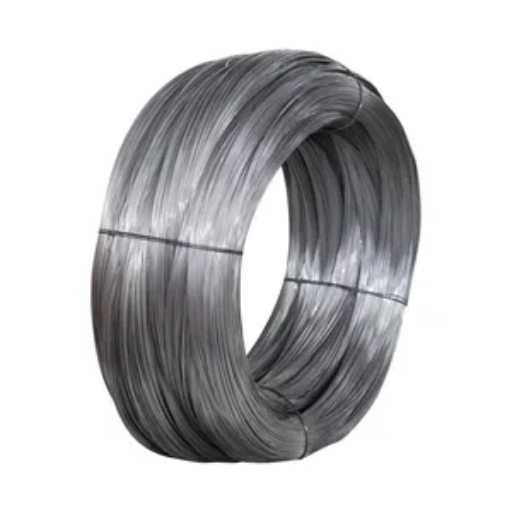
Every type of steel has a specific use, an application, which is reflected in the four preferential categories: carbon steel, alloy steel, stainless steel, and tool steel. Carbon steel is the most common type because of its affordability and structure. It’s primarily used for construction purposes. Chromium, nickel, and vanadium are alloyed to enhance the toughness and wear resistance of the metal, making it ideal for the automotive and aerospace industries. Its alloys also increase its durability, helping alloy steel nuts withstand harsh conditions. Unlike carbon, stainless steel is widely utilised for its corrosion-resistant properties. Its aesthetic appeal makes it sought after for use in kitchenware, medical instruments, and architectural designs. Last but not least, tool steel helps with the manufacture and drilling of holes due to its weldability and cuttability. Knowing which tool to use helps one select the best material that can perform and outlast other materials.
Understanding Steel Grades Explained
This project reinforced my practice of always stressing the need to align the material properties with the application when choosing the appropriate steel grades. Every grade has its own advantages, be it carbon steel with its low costs, stainless steel with its durability towards corrosion, or tool steel, which is ever so durable. I have witnessed the right steel grade choice lead to staggering changes in performance, efficiency, and durability of a product. It is not merely a question of choosing any metal, but rather whether the metal is designed to suit certain criteria that guarantee optimum outcomes for different projects.
How Are Steel Grades Categorized?
The classification of steel grades relies on a number of determinants that guarantee the suitability of each grade for specified purposes. In my opinion, this classification does appear to be very complex; however, in my experience, it can be simplified to a few primary principles:
- Chemical Composition: Carbon, chromium, nickel, and manganese are all present in steel as its constituents; as such, they directly influence classification. For example, stainless steels have a greater content of chromium, which accounts for their higher corrosion resistance, whereas high-carbon steels serve other functions, such as tools and instruments for cutting.
- Manufacturing Processes: The steel grade is, to a large extent, dependent on the way it is worked. It is known that the processes of hot and cold rolling are accompanied by heat treatments like annealing and hardening, which alter some of the steel’s mechanical properties, such as strength and flexibility.
- Mechanical Properties: The grade of steel for a construction or manufacturing application is defined by a number of impacts like tensile strength, ductility, hardness, and impact resistance. Construction steels, for instance, must have a high tensile strength, while softer, more ductile steels serve other common functions in the automotive industry.
- Application-Specific Standards: Steel requirements from different industries fall under specific standards defined by international bodies like ASTM, ISO, SAE, and others. Steel must be reliable under defined conditions whether as materials for bridging, parts for automotive, or pressure vessels, proper governance exists for their use.
- Surface Finish and Coatings: There are steel grades with specific surface finishes or protective coatings, which are commonly used when the final application is in sight of corrosion or some other adverse environment.
Through these considerations, steel grades are systematically tailored to any application’s requirements. In my opinion, knowledge of these parameters assists in choosing the optimal grade, but more importantly, assures me that the project will endure through time and will be completed using purpose-built materials.
Exploring the Steel Grades Chart
The Steel Grades Chart simplifies finding the exact type of steel required for any application by organizing information into a systematic format. The chart considers various parameters like chemical composition, mechanical properties, and specific applications, making the selection process more straightforward. As an example, high-carbon steel is suitable for tools and cutting implements because of its hardness, whereas stainless steel is used in places where there is a need for corrosion resistance. Having a sound comprehension of this chart guarantees informed choices, ensuring the appropriate materials are utilized relative to the project’s function and the surrounding environment.
How to Choose the Right Steel Grade for Your Project?

In my opinion, selecting the correct type of steel relies upon understanding what your project needs in the first place. To begin, think about the surrounding conditions. Will the steel be exposed to highly corrosive environments or areas with moisture? If yes, then stainless steel is frequently the ideal selection. Then, think about the mechanical limitations. For heavy-duty work like construction or machinery, high-carbon or alloy steels work really well. Last, consider the budget and the needs for fabrication. Some grades can be welded or machined with ease, thus saving time and money. All things considered, I aim to ensure that the appropriate, long-lasting steel for different types of projects is utilized.
Evaluating Mechanical Properties
Key elements in deciding the mechanical properties of a material are its tensile strength, hardness, ductility, and impact resistance. A material’s ability to resist pulling forces is determined by its tensile strength, while resistance to wearing and deforming is measured through hardness. The ability of the material to stretch before breaking is a necessary property in shaping and forming, which can be assessed as ductility. Lastly, measuring the toughness of the material to withstand sudden forces determines the impact resistance. All these properties guide the selection of materials for specific purposes. In the case of steel, it ensures that the steel performs as needed when subjected to certain conditions.
Matching Steel Grades to Application Needs
In choosing the appropriate grade of steel for a certain application, striking the right balance between the material’s characteristics and the requirements of the project is paramount. In construction, for example, I begin with a focus on the ductility and toughness of the steel to ensure effective structural support under heavy loads and varying conditions. However, in Part manufacturing, where extensive forming is needed, the ductility and malleability of the material dictate the choice of the grade. Also, the selection of stainless steel for its corrosion-resistant capabilities is important in highly moist or chemically active environments. The process of matching steel grades to application needs encompasses the grade’s material properties in focus and the particular problem of its use—it involves understanding the requirements and challenges to achieve effective results.
Considerations for Weldability and Ductility
When discussing weldability and ductility, I always highlight the need to assess the factors relative to the application in question. These traits are important, but their prioritization shifts based on the application of the steel part. This is how I put it:
- Weldability
While evaluating a material’s weldability, I consider the carbon content, alloy composition, and the specific welding technique to be applied. Steel with lower carbon content, for instance, has better weldability because the amount of cracking during and after welding is minimized. Moreover, the presence of some alloys, like chromium or nickel, may either enhance or diminish weldability depending on how bolstered the composition is. For higher strength steels, factors like pre-heating or controlled cooling become essential in order to avoid certain definitive structural constituents which might be problematic when welding these steels.
- Ductility
Ductility concerns the ease of stretching or deforming a material without fracture. I make it a point to look at the percentage of deformation that is specified, as it indicates the amount of stress a steel could withstand without breaking. For forming or bending operations, it is critical to choose a highly ductile steel grade in order to avoid failure due to excessive mechanical stress. This is especially true for processes such as deep drawing or roll forming.
By weighing and comprehending these factors, it’s plausible to choose a steel grade that corresponds to the welding demands and the required ductility of the final product. Choosing a material largely hinges on appreciating the operational requirements versus the long-term dependability of the product.
What Are the Properties of Stainless Steel?
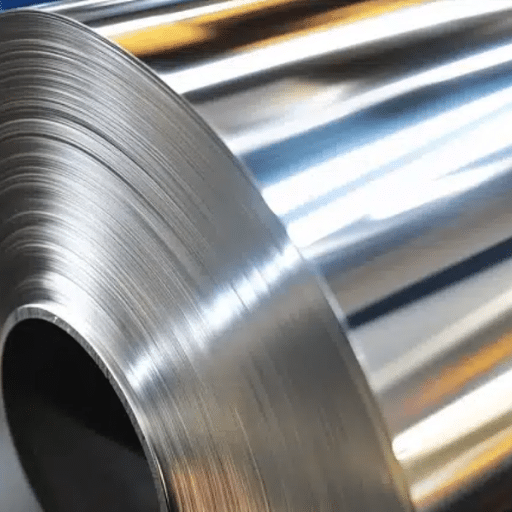
Stainless steel is one material in particular that I have found to possess a very varied set of traits that would cater to diverse needs. Of the many properties to its name, corrosion resistance stands the tallest. It makes stainless steel ideal to be used in processes where there is moisture, chemicals, or even extreme temperatures. Moreover, stainless steel has remarkable strength and durability, being able to withstand a lot of stress. Adding to its benefits, it is also very hygienic and easy to clean, which is why it is commonly used in food processing and medical equipment. Its aesthetic appeal, with a smooth, polished finish, adds to its versatility across industries. Last but not least, its recyclability has eco-friendly projects covered, making it a sustainable option. All these properties combined make stainless steel remarkably reliable and adaptable.
Understanding Corrosion Resistance
Corrosion resistance refers to the capacity of a material to resist damage due to chemical or electrochemical interactions with its environment. A prime example is stainless steel, which owes its properties to chromium. Chromium combines with oxygen to create a passive oxide layer, which prevents further oxidation. This layer is able to repair itself, ensuring long-term performance, even in corrosive environments, which increases its versatility for a variety of applications.
The Role of Nickel and Chromium
The key metals used in the manufacturing of stainless steel, nickel, and chromium, play a crucial role in giving it outstanding features. In my view, nickel provides excellent corrosion resistance while also increasing the alloy’s strength and ductility, particularly at sub-zero temperatures. Conversely, chromium plays an important role in the development of the protective oxide layer, which is stainless steel’s enduring quality. These two elements together not only prevent the wear and tear of the material but also make the alloy useful in demanding fields like construction, chemical processing, and medical apparatus. It’s their combined action that truly differentiates stainless steel as a dependable and universal alloy.
How Does Carbon Steel Differ From Other Types?

The main differentiating factor between carbon steel and others is its carbon composition, which determines its strength, hardness, and ductility. Carbon steel does not contain notable levels of chromium like stainless steel, and therefore does not have the same corrosion resistance. Its simple composition, however, makes it extremely affordable and useful for construction, automotive parts, and tools. Carbon steel: does not require environmental and corrosion resistance, and needs durability and workability.
Characteristics of Low-Carbon and Medium-Carbon Steel
Low carbon steel is also referred to as mild steel and has a carbon content not exceeding 0.25%. From my experience, this adds a softening characteristic while also making it more malleable and easier to weld than other steel types. Its ductility and toughness are exceptional; these reasons largely contribute to its wide application in the industry for sheets, wires, and pipes. Its trade-off includes lower strength and weaker resistance to wear, which makes it not so suitable for high-stress situations.
Alternatively, medium carbon steel has around 0.25% to 0.60% carbon which gives it a better strength to ductility ratio. This material exhibits harder values and can undergo heat treatment to improve its properties even more. While working with medium carbon steel, I tend to note its improved strength and resistance to abrasion compared to low carbon steel. It is perfect for use in items such as gears, axles, and other structural parts where strength and toughness are equally important.
To summarize the characteristics in detail:
Low Carbon Steel (Carbon Content < 0.25%) Soft and Malleable, Ductile Improvements Easy to Fabricate and Weld Excellent Ductility and Toughness(some ways to avoid repetition) Limited Strength and decent toughness Ideal for common uses such as wires, pipes, and sheets. Medium Carbon Steel (Carbon Content 0.25% – 0.60%) Better Strength than Low Carbon Steel Higher Strength and less ductility: Improved Wear Resistance Superior wear resistance Ability to improve, gain desirable mechanical attributes Maintains a good balance between ductility and hardness Appropriate for servo demanding uses: machine parts, automotive components.
These characteristics simplify the process of selecting the type of steel which best fits the requirements of a given project.
The Impact of the Amount of Carbon on Steel Properties
From my perspective as an industry expert. It is quite clear to me that the amount of carbon in steel affects its several properties as well as its application for use. An increase in carbon content will increase the strength and hardness of steel but will reduce ductility form which makes it suited for tools or areas of high wear. Low-carbon steel, on the other hand, is more ductile and weldable, which makes it better suited for structural works. In the end, the selection of the proper grade of steel is a matter of balancing in meeting the requirements of the application.
What Are the Benefits of High-Strength Low-Alloy Steel?
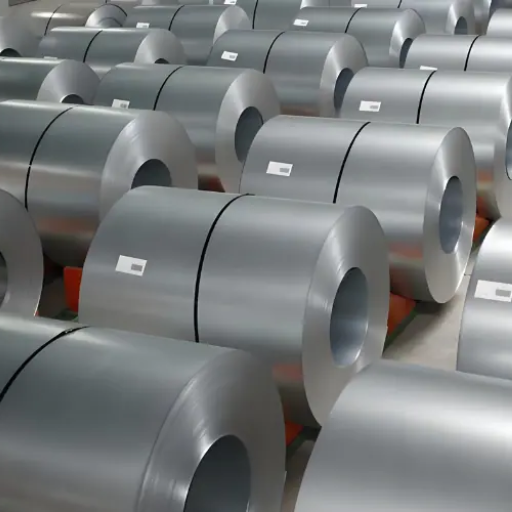
The high-strength low-alloy (HSLA) steel has numerous advantages, which is the reason why it is highly used across industries. It offers the greatest considerations regarding weight and strength. It allows designs to be more efficient and lighter while keeping the structures intact. Maintenance costs are reduced, and the ammonia’s service life is increased with the addition of corrosion resistance, which is an advantage in tough environments. HSLA steel also has increased weldability and formability, which allows fabrication flexibility while retaining mechanical properties. These benefits also suggest its usefulness in construction, transportation, machinery, energy, and many other areas.
Advantages of High-Strength and Toughness
The benefits from my fieldwork, particularly involving HSLA steel, speak volumes with regard to the material’s yield strength and toughness, and durability. Those qualities enable us to attain a lightweight and efficient design that is taught in modern engineering circles. The high strength guarantees that harsh loads are withstood by the structure, while toughness ensures impacts and other jerking forces are endured without the risk of structural failure. This not only enhances safety, but also allows for greater creativity in design, enabling numerous advances in construction, automotive, energy engineering, among other sectors.
Applications in Automotive and Structural Steel
The development of high-strength and tough materials has transformed the automotive industry and construction steel applications, as they provide lightweight yet robust designs. In the automotive industry, these materials enable the manufacturer to reduce vehicle weight, which increases fuel economy, without compromising safety due to the high crash safety offered by these materials. For structural steel, their robustness and load-bearing properties enable the innovation, construction,n and enduring legacy of modern engineering buildings and infrastructure,e which are safe and sustainable.
What Is the Role of Alloy Steel in Industry?
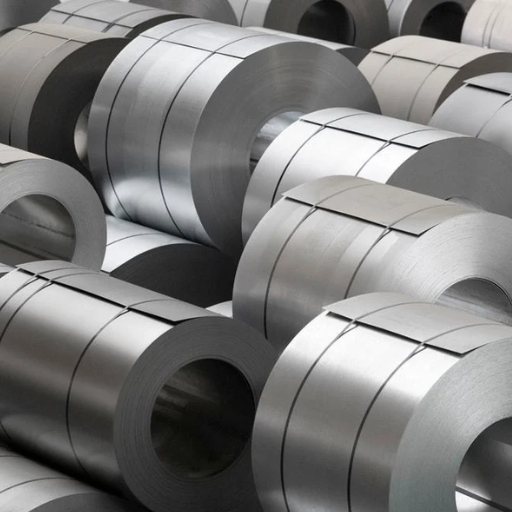
Considering my perspective, alloy steel holds great significance in industrial activities today. It possesses unmatched strength, versatility, and adaptability, thus allowing it to meet the rigorous requirements of industrial processes. As an example, because of my involvement in the manufacturing and construction industries, I have seen alloy steel supplemented with enhanced properties such as improved toughness and corrosion resistance be utilized for the production of more durable tools, machinery, and infrastructure. Its use in the automotive, aerospace, and energy industries has made it one of the core components fueling innovation and efficiency, helping industries address modern-day challenges with trustworthy, high-performance materials.
Key Elements: Molybdenum and Manganese
Molybdenum and manganese are important alloying components that greatly improve the qualities of steel. Molybdenum makes steel stronger, improves hardening, and adds to its resistance during high temperatures, making steel suitable for challenging tasks. Manganese, however, promotes the toughness and wear resistance of steel while also acting as a deoxidizer in the production stage, cleaning the steel to improve its resiliency. Alloy steel is far more durable and adaptable thanks to these elements working in conjunction with each other.
Understanding Steel and Alloy Combinations
I confidently state that knowing the technical combinations of steel and alloys serves a major purpose in meeting certain engineering and other industrial needs. Each steel addition has a purpose, modifying its features to ensure it can be put to use for its intended applications. Take molybdenum, for instance. It is critical in producing high-performing materials that can endure severe temperatures and stress. At the same time, manganese guarantees a certain level of toughness and structural integrity. These engineered combinations are not random, the selection process is systematic and practical. Understanding these concepts helps meet complex and simple construction, manufacturing, and other related problems efficiently and creatively.
Reference
- Types of Steel & Steel Grades Chart – Provides steel classifications, usages, and an ASTM Steel Grade chart.
- What are the Different Types of Steel and Steel Grades? – Explains low carbon steel grades, their properties, and applications.
- 7 Questions to Ask When Picking the Perfect Stainless Steel Grade – Discusses factors like high-temperature environments and material composition.
Frequently Asked Questions (FAQs)
Q: What are the different types of steel used in construction projects?
A: There are several types of steel commonly used in construction, including carbon and alloy steel, austenitic stainless steel, and weathering steel. Each type has unique properties that make it suitable for specific applications.
Q: How do I choose the right type of steel for my project?
A: To choose the right type of steel, consider the specific properties required for your project, such as minimum yield strength, corrosion resistance, and the environment in which the steel will be used. Consulting with a professional or referring to ASTM International standards can also help.
Q: What are the properties of steel that I should consider?
A: Important properties of steel to consider include tensile strength, ductility, hardness, corrosion resistance, and thermal conductivity. These physical properties determine the performance of steel in various applications.
Q: What are the characteristics of austenitic stainless steel?
A: Austenitic stainless steel is known for its excellent corrosion resistance, especially in chloride environments, and its ability to maintain strength at high temperatures. It is commonly used in applications where these properties are critical.
Q: Why is the carbon and iron composition important in steel grades?
A: The carbon and iron composition in steel affects its hardness, strength, and ductility. Higher carbon content typically increases hardness and strength but reduces ductility. Different steel grades balance these properties for specific applications.
Q: What is weathering steel, and where is it typically used?
A: Weathering steel, also known as corten steel, is designed to form a protective rust layer, reducing the need for painting. It is typically used in outdoor structures like bridges and buildings exposed to the elements.
Q: How do chromium and chromium-nickel stainless steels differ?
A: Chromium stainless steels are primarily known for their corrosion resistance, while chromium-nickel stainless steels, such as grade 304, offer enhanced strength and toughness. These differences influence their use in various steel products.
Q: What role do alloying elements play in steel properties?
A: Alloying elements like chromium, nickel, and molybdenum are added to steel to enhance specific properties, such as corrosion resistance, toughness, and strength. These elements help tailor steel for specific service conditions.
Q: How are steel grades designated in the steel industry?
A: Steel grades are designated by systems like those of ASTM International and the American Iron and Steel Institute, which use numbers and letters to indicate the composition, properties, and applications of the steel. The last two digits in the grade often refer to the specific properties or composition.






